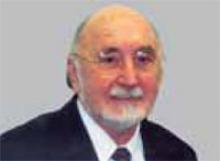The decision by the US Food and Drug Administration (FDA) to put warning labels on all estrogen and estrogen-progestin products prescribed for postmenopausal women is startling—especially when you consider that barely a year ago, estrogen was viewed as a remedy or preventive for all kinds of ills.
This reversal in the official status of estrogen has created shock waves among Ob/Gyns still struggling to answer patients’ questions and counsel them appropriately.
The FDA’s role has been anything but passive; early this year, it issued several recommendations on the use of estrogen and estrogenprogestin hormone replacement therapy (HRT) by postmenopausal women. The FDA:
- acknowledged that estrogen and estrogen-progestin formulations remain the most effective treatment for hot flashes and night sweats caused by menopause, but counseled doctors to prescribe the lowest possible dose for the shortest duration.
- advised against using HRT to prevent cardiovascular disease.
- urged clinicians to consider approved non-estrogen agents when prescribing HRT to prevent menopause-induced osteoporosis, reserving estrogen for cases in which the risk of osteoporosis is greater than the risks associated with the therapy. (See related article “New options in osteoporosis therapy: combination and sequential treatment”.)
- recommended that, until more data become available, all estrogens—with or without a progestin—be presumed to carry risks similar to those observed for conjugated equine estrogen (CEE) and medroxyprogesterone acetate (MPA) in the Women’s Health Initiative (WHI).
The best advice came from FDA Commissioner Mark McClellan, MD, PhD, who encouraged women to consult their physicians about the clinical implications of the WHI findings.
Although concrete data on the risks and benefits of estrogen have never been so substantial, considerable disagreement remains over how to proceed from here. To provide our readers with additional perspective and insight, OBG Management asked 2 international experts, Dr. Morris Notelovitz and Dr. Susan Love, to offer their views on the WHI findings and other aspects of postmenopausal estrogen use.
—Robert L. Barbieri, MD
Editor-in-Chief
Beware of widespread preventive therapies
The recent FDA decision to require warning labels on all estrogen and estrogen-progestin products prescribed for postmenopausal women is a vindication for all of us who have been worried about the widespread use of these drugs for prevention. (Note that this article is not about symptom relief; short-term use of hormone therapy for this indication is a different discussion.)
Although many women and doctors were shocked by the data from the long-overdue randomized, controlled trials on the use of HRT for prevention, there were many others who cheered—not because of the findings, but because at last we were doing the kind of studies that would tell us whether the commonly held hypothesis about these drugs was true.
Those who are holding on to the fact that the WHI’s estrogen-alone study has not yet been halted as evidence that progestin is the culprit should note that an increase in heart attacks and strokes has been seen in this cohort as well. The breast cancer risk may be less without the progestin, but many studies suggest that it certainly is not zero. Plus, the smaller size of the study means it would take longer to reach the same stopping goals. The risk-benefit ratio is likely to be similar to that for estrogen-progestin for most endpoints.
An abundance of observational data
Prior to the Heart and Estrogen-progestin Replacement Study (HERS) and WHI trials, only 1 long-term randomized, controlled trial had explored postmenopausal HRT, and it was too small to yield definitive data.1-3 The rest of the many studies looking at the benefits and risks of hormone therapy for prevention were based on observation. Indeed, the overwhelming majority of them demonstrated that HRT decreased heart disease.4,5 But these studies were still observational. Observational studies cannot prove cause and effect.
As we now know all too well, women who took postmenopausal HRT were, in general, of a higher socioeconomic level, better educated, and healthier than the women who did not.6 It was not a matter of hormones making women healthy, but rather, healthy women taking hormones.
Women who can generate as little as 5 pg/mL of their own estrogen have almost no fractures; these data suggest that we probably do not have to “replace” hormones in most women.
—Dr. Love
In itself this is not surprising. Confounding is common in observational studies and is one of the reasons this research is better at driving hypotheses than proving cause and effect. Somehow, however, the number and consistency of these studies clouded our collective judgment and caused us to get ahead of the data. It is not the first time we have let this happen, and I am sure it will not be the last.



